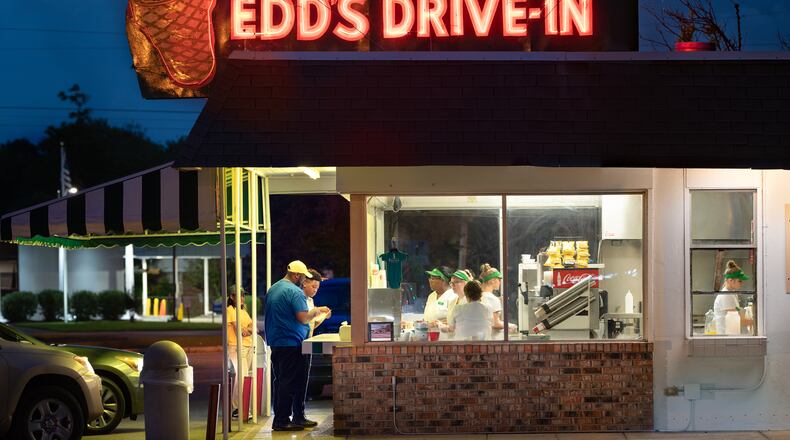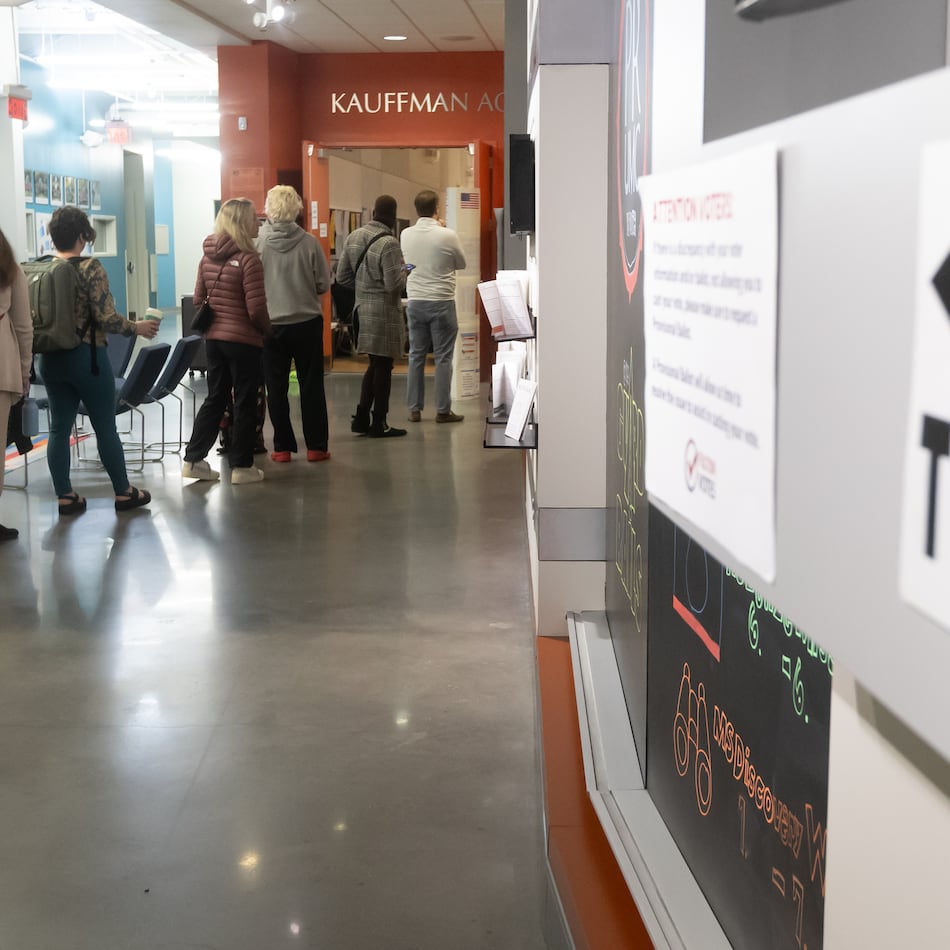This story was originally published by ArtsATL.
The impact of racism on public health is not common knowledge, but extensive research has shown that “centuries of racism in this country has had a profound and negative impact on communities of color,” according to the Centers for Disease Control and Prevention.
This is why the far-reaching body of work by photographer Rich Frishman, “Ghosts of Segregation,” feels at home at the David J. Sencer CDC Museum. His images take us on a sobering trip around the country, literally shedding light on places where segregation and Jim Crow laws shaped the architecture of buildings from schools to movie houses.
Some of these sites have made history — the infamous Edmund Pettus Bridge in Selma, Alabama, comes to mind — but many places are inconspicuous and have seemingly been forgotten. This is exactly what Frishman wants us to see and to reflect upon. In his own words, it’s an effort to “heighten awareness, motivate action and spark an honest conversation about the legacy of racial injustice in America.”
Credit: ©Rich Frishman
Credit: ©Rich Frishman
Frishman comes from a photojournalism background, but, for this project, he deliberately turned his camera toward the built environment. Not unlike an archeologist, he looked for signs and markers that reveal the past — or what he poetically calls “ghosts.”
“Our built environment is society’s autobiography writ large,” he notes. “Fueled by fear and intolerance, these ghosts haunt us because they are very much alive. While this project to date has focused on the Deep South, prejudice has no geographic boundaries. I have all of America to explore.”
And he did. Frishman traveled across many states, from New York to Oregon and Michigan to Mississippi. In 2019, he claimed to have documented 75 sites for his project -- segregated resorts, drive-ins, internment camp barracks, colored entrances to theaters and churches, to name a few — and has since photographed many more.
Although most of his images depict acts of racism towards Black communities, he did not limit himself, extending his research to include Chinese, Japanese and Latino communities as well.
Credit: ©Rich Frishman
Credit: ©Rich Frishman
This traveling exhibit (at the CDC Museum through May 24, 2024) is hosted by the CDC in partnership with the Atlanta Center for Photography, and features 35 of these photographs. They are installed on two levels on stand-alone panels displayed at different angles. The exhibit is minimalist in its design but prolific in contextual information. Extended captions, or back stories, become part of the experience as much as the images themselves, encouraging viewers to comprehend the full depth of the issue.
Take, for instance, the powerfully deceptive image “Bandstand Mural at the Former Sunset Cafe.” It features a mural of jazz musicians playing in the one-time glorious Chicago musical hall, now a beauty and sundries supplies store. Frishman framed his image in such a way that we see both the mural and the shelves that were built in front of it, with their display of shoes and handbags. The image is subtle, its impact augmented by the thorough caption, without which it would be impossible to make sense of it.
If the extent of his research is remarkable, so is the quality of his images. In a short video displayed at the entrance of the exhibit, Frishman explains his use of what he calls “stitching” or blending, a photography technique that consists of working with tens, sometimes hundreds, of images taken from the same viewpoint but at different light conditions and moments in time. This post-production process is especially helpful in late evening or night shoots, resulting in images that offer a luminous rendering, as seen in “Lynching site near Philadelphia, Mississippi.”
Credit: ©Rich Frishman
Credit: ©Rich Frishman
Frishman has a real appetite for racist history that is hidden in plain sight, focusing on the most mundane building to reveal an important bit of history. In the process, he has developed a reliable network of resources. “I have reached out to scholars, historians and ordinary people who might share their insights, experiences and suggestions. Local libraries and museums often guide me to forgotten places,” he notes.
In “Segregation Wall: Templin’s Saloon, Gonzales, Texas,” what looks like a photograph of an emptied Western-style saloon with an original pre-1929 Dr. Pepper logo on an inside wall is in fact a blatant scene of segregation. According to Frishman’s research, the wall was erected in 1906 to separate white customers, who were allowed to sit in the front of the saloon, from customers of color, primarily Latinos. Frishman notes that “when the saloon was remodeled and re-opened in 2014, the wall, no longer used for its original purpose, was retained as a historical reminder of those dark days.”
In 2021, Frishman received a Guggenheim fellowship to continue the project, a testament to the importance of his work and an incentive to dig even deeper into the vestiges of racism. A book release is planned for February 2024, expanding even more a work that has, it seems, become a true calling.
EXHIBIT PREVIEW
“Ghosts of Segregation: Photographs by Rich Frishman.” Through May 24, 2024. 9 a.m.-5 p.m. Mondays, Tuesdays, Wednesdays, Fridays; 9 a.m.-7 p.m. Thursdays; closed weekends and federal holidays. Free. David J. Sencer CDC Museum, 1600 Clifton Road N.E. 404-639-0830, cdc.gov/museum.
::
Virginie Kippelen is a photographer, multimedia producer and writer specializing in editorial and documentary projects. She has contributed to ArtsATL’s Art+Design section since 2014, writing mostly about photography. And after living 25 years in the United States, she still has a French accent.
Credit: ArtsATL
Credit: ArtsATL
MEET OUR PARTNER
ArtsATL (www.artsatl.org), is a nonprofit organization that plays a critical role in educating and informing audiences about metro Atlanta’s arts and culture. Founded in 2009, ArtsATL’s goal is to help build a sustainable arts community contributing to the economic and cultural health of the city.If you have any questions about this partnership or others, please contact Senior Manager of Partnerships Nicole Williams at nicole.williams@ajc.com.
About the Author
Keep Reading
The Latest
Featured







